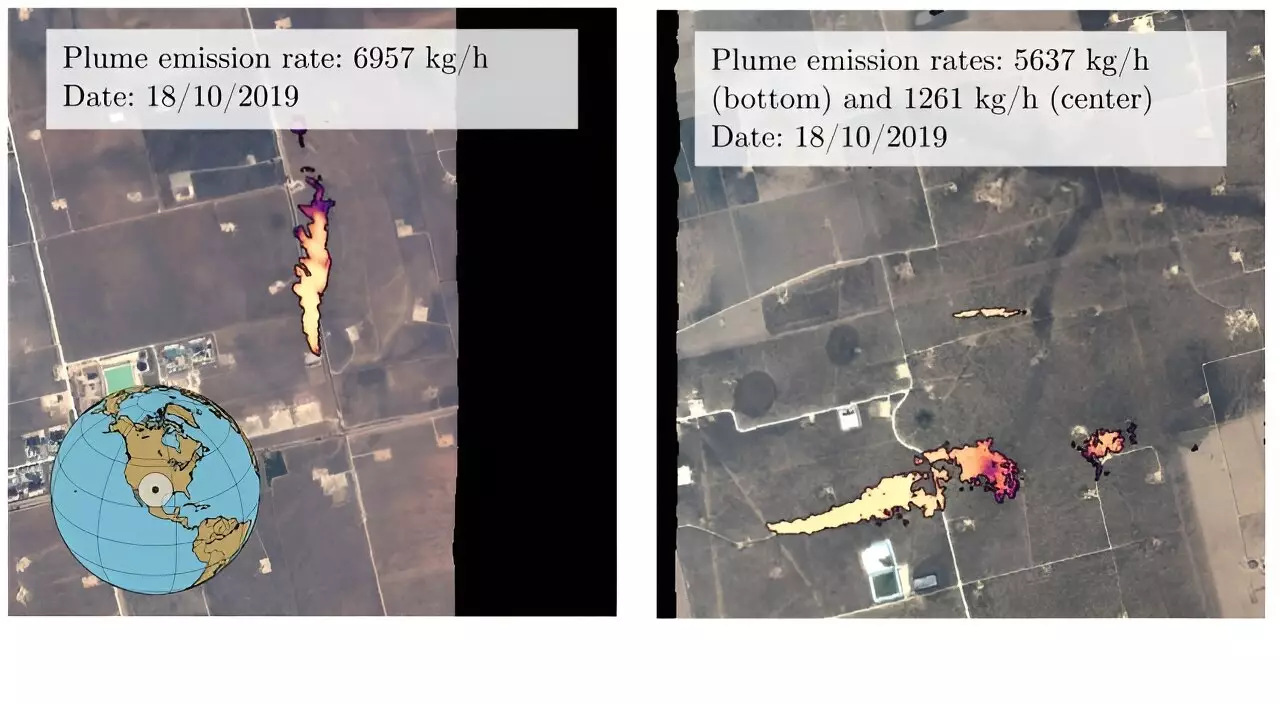The University of Oxford, in collaboration with Trillium Technologies’ NIO.space, has made a groundbreaking discovery in the field of greenhouse gas emissions. By leveraging machine learning and hyperspectral data, researchers have developed a tool capable of automatically detecting methane plumes on Earth from satellite orbits. This development could potentially revolutionize the identification of “super emitters” of methane and enhance efforts to combat climate change. The research paper, titled “Semantic Segmentation of Methane Plumes with Hyperspectral Machine Learning Models,” has been published in Scientific Reports.
While most environmental goals focus on reducing CO2 emissions, combating methane emissions is just as critical in the fight against rising global temperatures. Methane is a greenhouse gas that is 80 times more effective in trapping heat than CO2, albeit with a shorter atmospheric lifespan. Taking swift action to reduce anthropogenic sources of methane emissions would yield immediate results in slowing global heating and improving air quality. It is estimated that achievable methane emission reductions could prevent nearly 0.3°C of warming over the next two decades.
The Challenge of Methane Plume Detection
Until now, the methods for mapping methane plumes from aerial imagery have been limited, and the process itself has been time-consuming. Methane gas is not visible to the human eye and is often undetectable using the spectral ranges employed by most satellite sensors. Even when satellite sensors operate within the appropriate spectral range, data is often obscured by noise, leading to labor-intensive manual approaches in identifying methane plumes.
Revolutionizing Methane Detection with Machine Learning
To address these challenges, Oxford researchers have developed a novel machine-learning tool that utilizes hyperspectral satellite data to detect methane plumes. Hyperspectral satellites capture data within narrower bands compared to conventional multispectral satellites, enabling greater sensitivity to the unique signature of methane while minimizing noise interference. However, the increased amount of data generated by hyperspectral satellites necessitates the use of artificial intelligence (AI) for processing and analysis.
The researchers trained their model using an impressive dataset consisting of 167,825 hyperspectral tiles, each representing an area of 1.64 km2. These tiles were captured by NASA’s aerial sensor AVIRIS in the Four Corners area of the United States. The trained algorithm was then applied to data collected by other hyperspectral sensors, such as NASA’s EMIT (Earth Surface Mineral Dust Source Investigation mission), situated on the International Space Station. This arrangement allows for near-global coverage of Earth’s surface.
With the goal of fostering continued advancements in methane detection, the Oxford researchers have made the annotated dataset and model code openly available on their project page on GitHub. This open-source approach encourages collaboration and invites other researchers to contribute to the field of methane detection and mitigation. The sharing of resources will propel innovation and facilitate the development of more accurate and efficient methane plume detection techniques.
Lead researcher and DPhil student Vít Růžička, from the Department of Computer Science at the University of Oxford, highlighted the potential impact of on-board processing in detecting methane sources. By implementing on-board processing, priority alerts would be sent to Earth, such as a text-based signal providing the coordinates of identified methane sources. This real-time data transmission would facilitate prompt action in response to significant methane emissions.
The breakthrough achieved by the University of Oxford and Trillium Technologies’ NIO.space paves the way for advanced, automated methods of methane plume detection. By harnessing the power of hyperspectral data and machine learning, the identification of methane hotspots becomes more efficient and accurate, opening up new opportunities for reducing greenhouse gas emissions. This development, coupled with the commitment to open-source collaboration, ensures that researchers worldwide can contribute to the ongoing battle against climate change. The future holds promise as we continue to develop innovative solutions to preserve our planet’s delicate ecological balance.


Leave a Reply